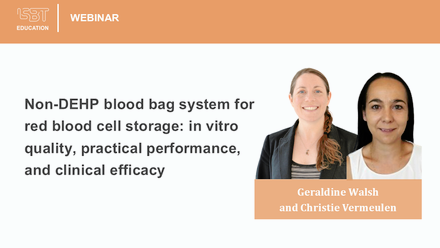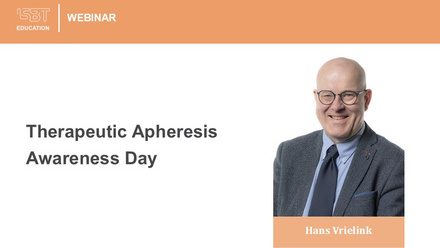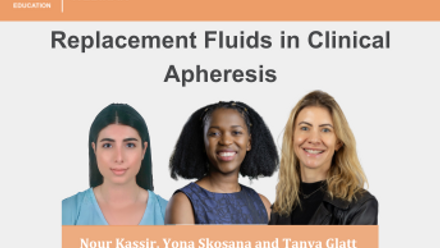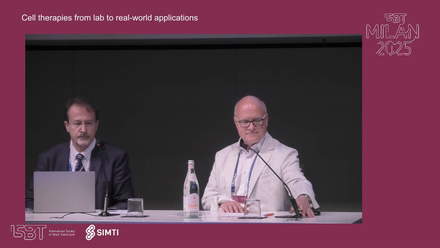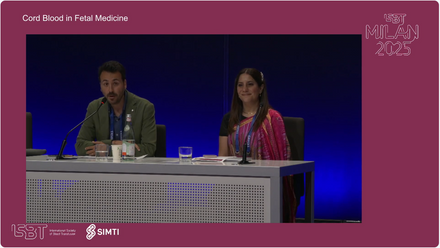The Joint ISBT / EHA session–CAR-T cell therapeutics and stem cells session included the following presentations:
1. Christian Chabannon: Update on CAR-T therapeutics
2. Nina Worel: New Pespectives on the Role of Blood Services in CAR-T
3. Angeles Fernandez Rodriguez: Pressure ulcer treatment with autologous bone-marrow mononuclear stem cells. EudraCT 2008-003015-12 results
4. Naoko Watanabe-Okochi: Criteria of storage for cord blood units at Japanese Red Cross Kanto-Koshinetsu Cord Blood Bank
MODERATORS: Erica Wood, Allison Waters
After the presentation, there was a questions and answers session, which is also included in the recording.
Abstract
Pressure ulcer treatment with autologous bone-marrow mononuclear stem cells. EudraCT 2008-003015-12 results
S Perez-Lopez1,2, M Alvarez-Viejo1,2, M Perez-Basterrechea1,2, A Fernandez-Rodriguez1,2, E Martinez-Revuelta1,2, A Perez-Arias3, C Burgos-Gutierrez3, J Garcia-Gala1,2
1Transfusion Service, Hospital Universitario Central De Asturias, 2Terapia Celular-Medicina Regenerativa, Instituto Investigación Sanitaria Principado de Asturias (Ispa-Finba), 3Cirugia Plastica Y Reparadora, Hospital Universitario Central de Asturias, Oviedo, Spain
Background: The use of Advanced Therapy Medicinal Products (ATMPs) is a promising therapeutic alternative, especially appropriate in those cases in which conventional treatment has not given good results, mainly in the case of bone marrow mononuclear cells (BM-MNCs) due to their properties promoting vascularization and recruiting paracrine factors that could induce angiogenesis and reduce cell necrosis resulting in wound healing. In this context, pressure ulcers (PUs) are defined as Localised damage to the skin and underlying tissue that generally appears over a bony prominence due to intense and prolonged pressure and/or friction. PUs appear mainly in immobilized people as patients with spinal cord injury. These wounds are a high source of morbidity and mortality due to the risk of infection and constitute a significant economic and social burden. Traditionally, treatment consists of an initial debridement followed for the removal of bone projections and the contribution of covering tissues (flaps). However, surgical treatment still has a high risk of recurrence and limits the possibility of carrying out a similar treatment for other ulcers.
Aims: Evaluate, in terms of safety and efficacy, the results obtained after cell therapy treatment in paraplegic patients with grade III/IV pressure ulcers included in the Clinical Trial EudraCT 2008-003015-12.
Methods: Autologous Bone marrow was extracted by iliac crest function and diluted 1:1 in saline with heparin 100 UI/ml. BM-MNCs isolation was performed at a Clean Room under GMP conditions stablished by Directive 2003/94/CE (Manufacture Certificate ES/020HV/19). MNCs were isolated by a Ficoll density gradient at 400 g for 25 min, mononuclear layer was transferred to a 50 mL conical tube and washed twice with saline at 550 g for 10 min. A minimum of 50·106 BM-MNCs were obtained. Cells were resuspended in a final volume of 14 mL heparinized saline and then filtered. A small volume was used for cell counts, characterization and sterility tests. About 10–12 mL were filled in a syringe and was taken to operating room where surgeon debrided the PU to eliminate necrotic tissue. When the wound was completely cleaned, surgeon closed the ulcer with non-absorbable suture and applied the cell solution by infusion or infiltration. Afterwards, patients should maintain prone position for 3 weeks to avoid premature opening of surgical intervention.
Results: Ninety-two paraplegic patients with grade III/IV PUs were treated with autologous BM-MNCs being the most common locations ischial injuries (69.8%) followed by sacral (17.4%) and trochanteric (12.8%). The main number of cells applied for treating the wounds was 104.42·106. No significant differences between control (conventional) and treatment group were observed in terms of immediate postoperative complications. Comparing follow-up results in two groups, significant differences (p < 0.001) appear in percentage of dehiscence at 6 months and 1-year after surgery (41% and 39.53% respectively in cell therapy group). Mean length of hospitalization was significant shorter in the ATMP group (p = 0.037).
Summary/Conclusions: After finishing the Phase I/II clinical trial it could be concluded that although BM-MNC treatment is an adequate and less aggressive alternative that minimises length of hospitalization resulting in a decrease of costs, significant differences were identified in long-term follow-up results in favour of conventional treatment of PUs.

